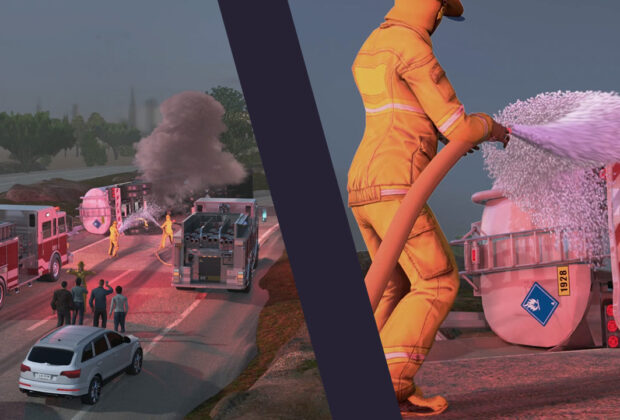Drug and alcohol testing in the workplace are performed in many industries in both Canada and the United States as one of the many measures to keep employees safe.
Drug and alcohol testing for the transportation industry can get a little more complicated because employees in this industry are often traveling between Canada and the US, and each country has different rules surrounding mandatory drug tests for employees. At a very high level, for Canadian transportation workers to be able to deliver goods to the US, they must follow the proper US DOT regulations, which include drug and alcohol testing that meets these regulations. Of course, the US DOT regulations apply to Americans transporting goods domestically as well. But since Canada does not have similar rules across the board for Canadian truck drivers, there’s confusion surrounding what rules Canada does have in place and what the difference is (if any) between those rules and the American ones. Let’s unpack each of these different drug and alcohol testing models and explain the differences between them.
Drug and Alcohol Testing for Transportation Workers in Canada and the US
Canada and the US have a robust trading partnership. Each country provides the other with goods that they wouldn’t typically be able to get without the ability to trade back and forth. Canada and the US may be more similar than different, but they are still two separate countries with separate standards and regulations.
US DOT 49 CFR Part 40 drug and alcohol testing
The US (DOT) rule, 49 CFR Part 40, outlines required procedures for drug and alcohol testing in their federally regulated transportation industry. These rules apply to every transportation worker delivering goods in the US (e.g. commercial truck drivers) regardless of whether the worker is domestic or international.
The COAA Canadian Model for drug and alcohol testing
In Canada, substance abuse laws in the workplace, including the transportation industry, fall under the Canada Labour Code, Part II. This code has an overarching goal of making sure that the health and safety of every employer and employee are protected, and part of that is ensuring that both employers and employees have rights with regards to substance use in the workplace. In general, the common-sense rule applies: if an employee is under the influence of a substance and as a result presents a danger to themselves and others in the workplace, then the employer must take appropriate action. Appropriate action can mean anything from getting the employee help, and/or removing them from the work site for safety reasons.
Since the United States has specific laws surrounding its transportation industry and drug and alcohol testing, Canada has needed to adapt training courses to meet the U.S. DOT standards so they can transport goods into the United States.
To make it easier for Canadian transportation workers to comply with drug and alcohol testing requirements in the United States, the COAA (Construction Owners Association of Alberta) in partnership with Energy Safety Canada developed a set of standards called the Canadian Model for Providing a Safe Workplace that closely mirrors the U.S. DOT 49 CFR Part 40 for alcohol and drug testing. These standards were developed to ensure quality testing and legal defensibility of results. In other words, the COAA Canadian Model was made to meet the U.S. DOT standards but adapted to use in Canada as well.
It’s important to note that while the COAA Canadian Model is widely used across Canada as a standard for drug and alcohol testing for many companies, including for the safety of transportation of goods within Canada, it is not officially endorsed by the government of Canada or any provincial or territorial governments. The COAA Canadian Model is the result of a collaborative approach between multiple stakeholders to ensure promote safety in the oil and gas sector of Alberta, which includes related transportation. Canadian transportation workers traveling to the US must be mindful of their compliance obligations under the US DOT drug and alcohol requirements, see “am I covered.”
Canadian Safety Standards Association CSA Z1008
The CSA Z1008 aims to provide Canadian companies with the health and safety information they need to implement a general policy surrounding impairment in the workplace, and applies to all industries that do not need to transport goods to the United States.
While the guidelines cover drugs and alcohol, they also bring awareness to other things that can affect productivity, physical, or mental abilities. The CSA standard applies to all industries that want guidelines on workplace impairment, and our NON-DOT courses follow these guidelines.
NON-DOT Drug and Alcohol Testing
Employers in non-regulated industries typically use NON-DOT drug and alcohol testing programs that follow their drug testing policies. An employer would use a NON-DOT drug and alcohol test because they can customize it depending on their needs, as long as it follows local, state, and/or provincial laws.
Looking for Drug and Alcohol Awareness Training? Danatec offers courses for supervisors. Check them out below:
Drug and Alcohol Training Refresher Courses:



Comments are closed.